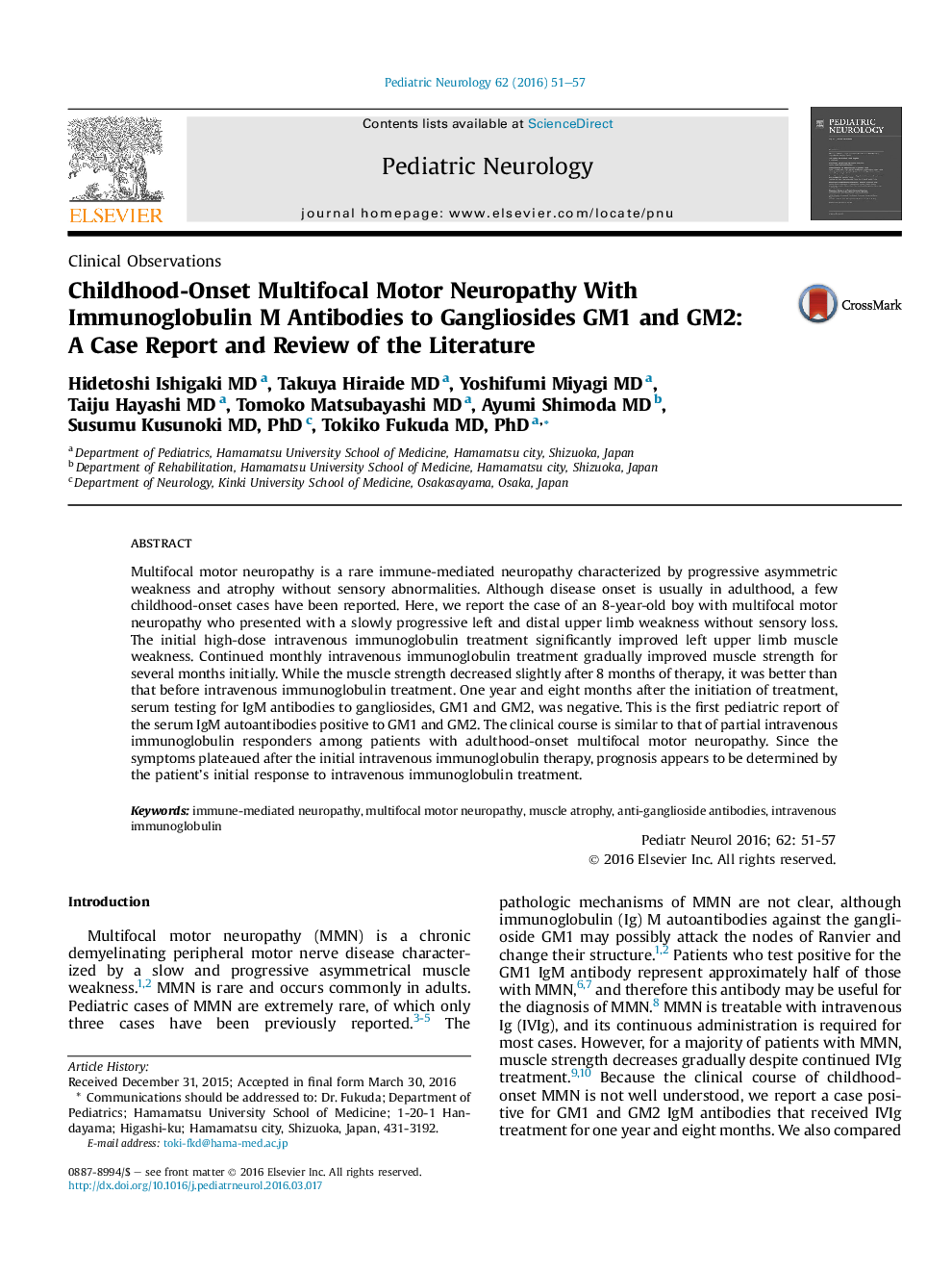| Article ID | Journal | Published Year | Pages | File Type |
|---|---|---|---|---|
| 3084260 | Pediatric Neurology | 2016 | 7 Pages |
Multifocal motor neuropathy is a rare immune-mediated neuropathy characterized by progressive asymmetric weakness and atrophy without sensory abnormalities. Although disease onset is usually in adulthood, a few childhood-onset cases have been reported. Here, we report the case of an 8-year-old boy with multifocal motor neuropathy who presented with a slowly progressive left and distal upper limb weakness without sensory loss. The initial high-dose intravenous immunoglobulin treatment significantly improved left upper limb muscle weakness. Continued monthly intravenous immunoglobulin treatment gradually improved muscle strength for several months initially. While the muscle strength decreased slightly after 8 months of therapy, it was better than that before intravenous immunoglobulin treatment. One year and eight months after the initiation of treatment, serum testing for IgM antibodies to gangliosides, GM1 and GM2, was negative. This is the first pediatric report of the serum IgM autoantibodies positive to GM1 and GM2. The clinical course is similar to that of partial intravenous immunoglobulin responders among patients with adulthood-onset multifocal motor neuropathy. Since the symptoms plateaued after the initial intravenous immunoglobulin therapy, prognosis appears to be determined by the patient's initial response to intravenous immunoglobulin treatment.
